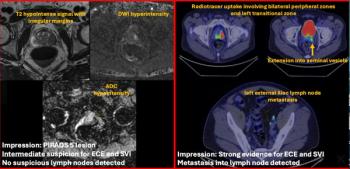
Non-Invasive Imaging Can Measure Cell Dysfunction in Patients with ALS
A new magnetic resonance spectroscopy technique can accurately measure how well the mitochondria are functioning in this patient group, potentially facilitating more effective therapies.
A new non-invasive magnetic resonance spectroscopy technique could help providers measure how well treatments are working for patients with amyotrophic lateral sclerosis (ALS), new research has found.
Specifically known as 31-phosphorus magnetic resonance spectroscopy can measure how well the mitochondria is working in patients who have this motor neuron disease (MND), as ALS is also known. Investigators from Sheffield Institute for Translational Neuroscience (SITraN) from the University of Sheffield in the United Kingdom tested how well this imaging technique works and published their findings in the Jan. 13 issue of
“In this study, we found that phosphocreatine levels were depleted in the brain compared to healthy controls and, in this muscle, we found that inorganic phosphates were elevated in patients with MND,” said lead study author Dr. Matilde Sassani, a neurodegeneration researcher at Sheffield. “Both of these findings are consistent with mitochondrial dysfunction occurring in these people living with MND.”
Because existing research indicates mitochondrial function is impaired in people with ALS, having a technique that can effectively and accurately measure how well it is working in living patients could be critical to treatment efforts, she said.
For this study, the investigators used the imaging technique to measure chemical that are critically involved in the cell’s energy metabolism. They tested it in both patients with ALS and healthy age- and gender-matched controls. Although the procedure strongly resembles a standard MRI exam, the process allows investigators to capture a direct measurement of chemicals, giving them the data they need to calculate a comprehensive picture of an MND patient’s energy status.
According to Sassani’s colleague, senior author Dr. Thomas Jenkins, clinical senior lecturer at SITraN, this new-found ability to assess mitochondrial function could pave the way for new, more effective MND treatments. It could potentially measure how well medications work on mitochondrial function in this patient group.
“Treatments that aim to rescue mitochondrial function in MND are being investigated in labs around the world,” he said. “This non-invasive tool can demonstrate whether medications in development are successfully targeting mitochondria, which is an important step in selecting treatments to take through to clinical trials.”
Future research is also needed, the team said, to test whether this imaging technique was be applied to patient groups with other forms of neurodegenerative disease.
For more coverage based on industry expert insights and research, subscribe to the Diagnostic Imaging e-Newsletter
Newsletter
Stay at the forefront of radiology with the Diagnostic Imaging newsletter, delivering the latest news, clinical insights, and imaging advancements for today’s radiologists.




























